Arceuthobium pusillum
Eastern dwarf mistletoe
Life History
Now we will follow the life history of the eastern dwarf mistletoe from being a fruit on the female plant, to being shot off like a rocket, establishing itself on a host and then reproducing to do it all over again.
The Journey of a Seed
When the fruits mature, usually around August or
September, the seeds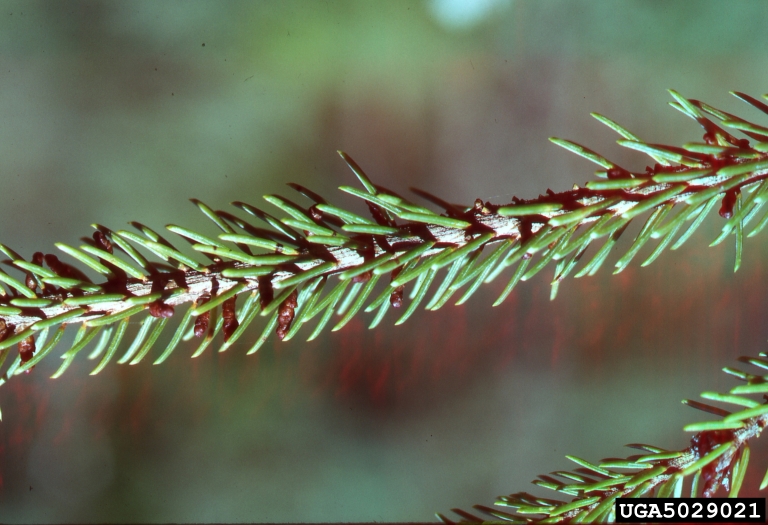 within them are rocketed out of the ripe fruit on thier new
journey in life. On the seed itself surrounding it is
a sticky substance called viscin. This allows the seed
to stick to anything that it hits, be it another tree, a
branch from the same tree, or an innocent animal passing by.
For the case of simplicity we will assume that the seed came
to rest on another tree branch. Once the seed is on
the branch when it is moistened by rain the viscin becomes
lubricant like allowing the seed to lodge itself at the base
of needles on the branch. After the viscin dries it
becomes a protective coating for the seed as it lays dormant
throughout the winter season. Assuming the seed is not
destroyed by insects or fungi it will germinate the
following spring. This is the time when the little
parasite develops its endophytic system within the bark and
wood of the host tree allowing nutrients and water to freely
flow to the plant. This all happens with no signs of
infection nor aerial shoots of the parasitizing plant
developing.
within them are rocketed out of the ripe fruit on thier new
journey in life. On the seed itself surrounding it is
a sticky substance called viscin. This allows the seed
to stick to anything that it hits, be it another tree, a
branch from the same tree, or an innocent animal passing by.
For the case of simplicity we will assume that the seed came
to rest on another tree branch. Once the seed is on
the branch when it is moistened by rain the viscin becomes
lubricant like allowing the seed to lodge itself at the base
of needles on the branch. After the viscin dries it
becomes a protective coating for the seed as it lays dormant
throughout the winter season. Assuming the seed is not
destroyed by insects or fungi it will germinate the
following spring. This is the time when the little
parasite develops its endophytic system within the bark and
wood of the host tree allowing nutrients and water to freely
flow to the plant. This all happens with no signs of
infection nor aerial shoots of the parasitizing plant
developing.
The Proliferation of a Parasite
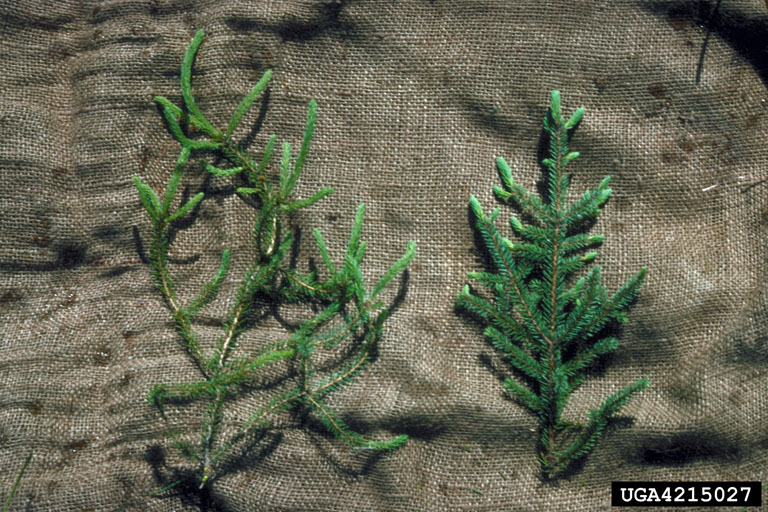 Two
years go by while the eastern dwarf mistletoe develops its
internal roo
Two
years go by while the eastern dwarf mistletoe develops its
internal roo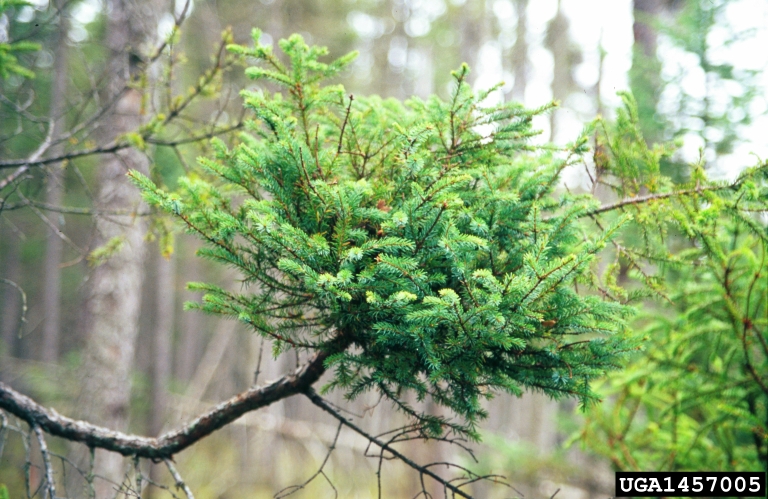 t
system anchoring itself to its host and drawing nutrients
from it. At this time the host organism losses apical
dominance around the infection site resulting in "witch's
broom". It takes an additional two years before the
first aerial shoots appearing giving rise to the flowers and
fruit of the parasite.
t
system anchoring itself to its host and drawing nutrients
from it. At this time the host organism losses apical
dominance around the infection site resulting in "witch's
broom". It takes an additional two years before the
first aerial shoots appearing giving rise to the flowers and
fruit of the parasite.
Pollination of a Parasite
The Arceuthobium pusillum is diecous, meaning
the male and female flowers are produced on separate plants.
What is unusual about the eastern dwarf mistletoe
pollination event is that the male pollinating structure
grows first before the female. In many other plants
the female flower matures first and readies itself for
pollination before the appearance of the male structure.
Though there is now specific organism that assists in the
pollination process wind and a wide variety of insects help
in this process of fertilization. This results in the
female plant developing a seed-bearing fruit. And from
there the cycle is complete and starts again when that plant
explosively ejects that new seed.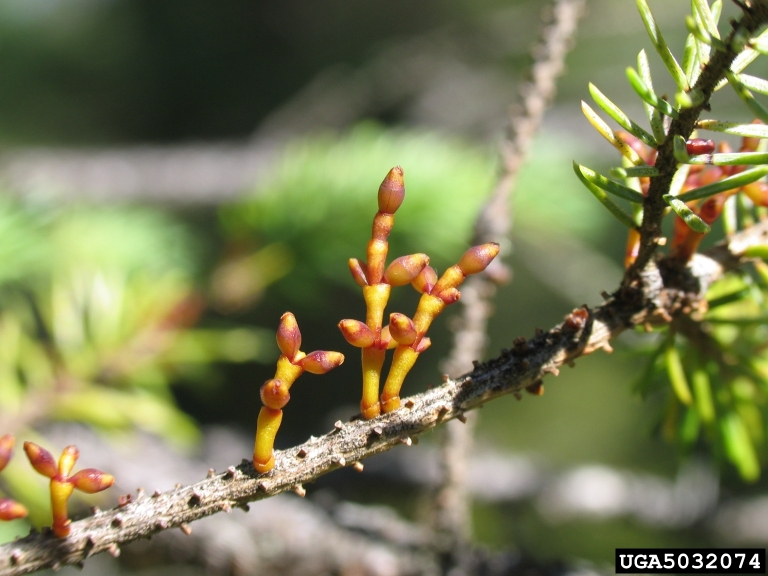
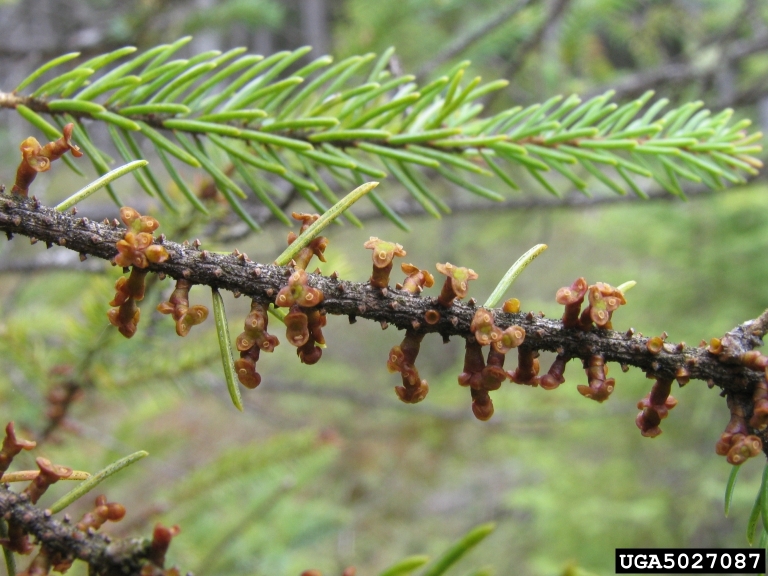 Arceuthobium pusillum take about 5 years from first
establishing itself on a host and disseminating its first
seed crop.
Arceuthobium pusillum take about 5 years from first
establishing itself on a host and disseminating its first
seed crop.